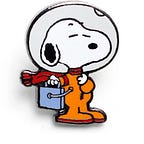Book Review: How to take smart notes — Why should you have an organized note-taking system
2023 8th book…. “How to Take Smart Notes: One Simple Technique to Boost Writing, Learning and Thinking” written by Sönke Ahrens.
Why do I read this book?
Have you ever come across an idea and want to relate to another source but you are never able to do so because you cannot find it? Well, that was me.
I want to know if there is a method that I can put all my notes in one place and can refer to them when I need them. And this book flashes through my mind.
This book in 3 sentences
It introduces the slip box note taking, which CONNECTS and LINKS your selected notes. It is not about storing all your notes but building linkage from the notes/ideas that spark or match your interest. Slip box gives you the routine to focus on the relevancy of new context.
What is Slip box
It is the note-taking system mentioned throughout the book.
The idea is taken from a German sociology professor Nikilas Luhmann who wrote everything interested him on small index cards and develop connections or categories upon those cards. He finished his professor's thesis within a year using slip box.
Now, with technological advancement, we seldom use paper notes anymore. But that doesn’t mean we have to stop here, as slip box is also applicable digitally.
There are 4 types of notes in the note-taking workflow:
- Fleeting notes help you capture everything quickly eg reading notes, course notes etc
- Literature notes are your thoughts from fleeting notes. It can be your experience or information from the sources, the criterion is that the note should add to your existing notes.
- Permanent notes describe how new information adds, or contradicts…to existing notes. It links the notes together and slip box is built
- Project notes use one time only eg blog outline
All notes should be written in own words and short and precise enough
You look for possible connections constantly in literature notes. When you spot something there, you make a note for permanent note on how it relates and store it in slip box.
3 things this book helps me…
1. Think critically.
We won’t include every note we make in slip box but only those related to the existing notes. So, we learn to spot patterns and decide whether the new information can be a possible elaboration or contradiction of the existing ones.
2. Learn better.
It is easier to learn and remember things in a lattice model of work — Charlie Munger
We only linked the new information that is relevant to our existing thinking in slip box. Which helps us to retrieve information better as information is linked instead of isolated.
If you can’t say it clearly, you don’t understand it yourself — John Searle
We take notes in our own words instead of direct copying which helps us rephrase and understand better.
3. Find Insights
We find linkage on what is already had in slip box ****and begin from there rather than brainstorming from scratch which is an easier task to do.
Book information
Book: “How to Take Smart Notes: One Simple Technique to Boost Writing, Learning and Thinking”
Author: Sönke Ahrens
Ratings: 4/5
Recommend to folks…. who want to learn better as understanding and making output are part of the learning process
